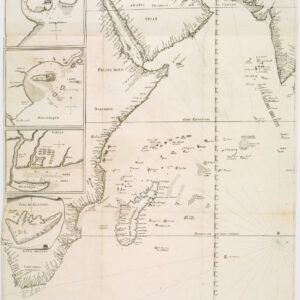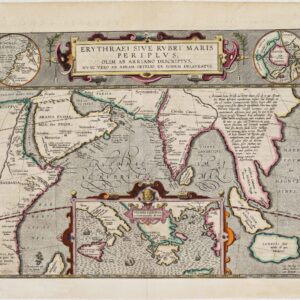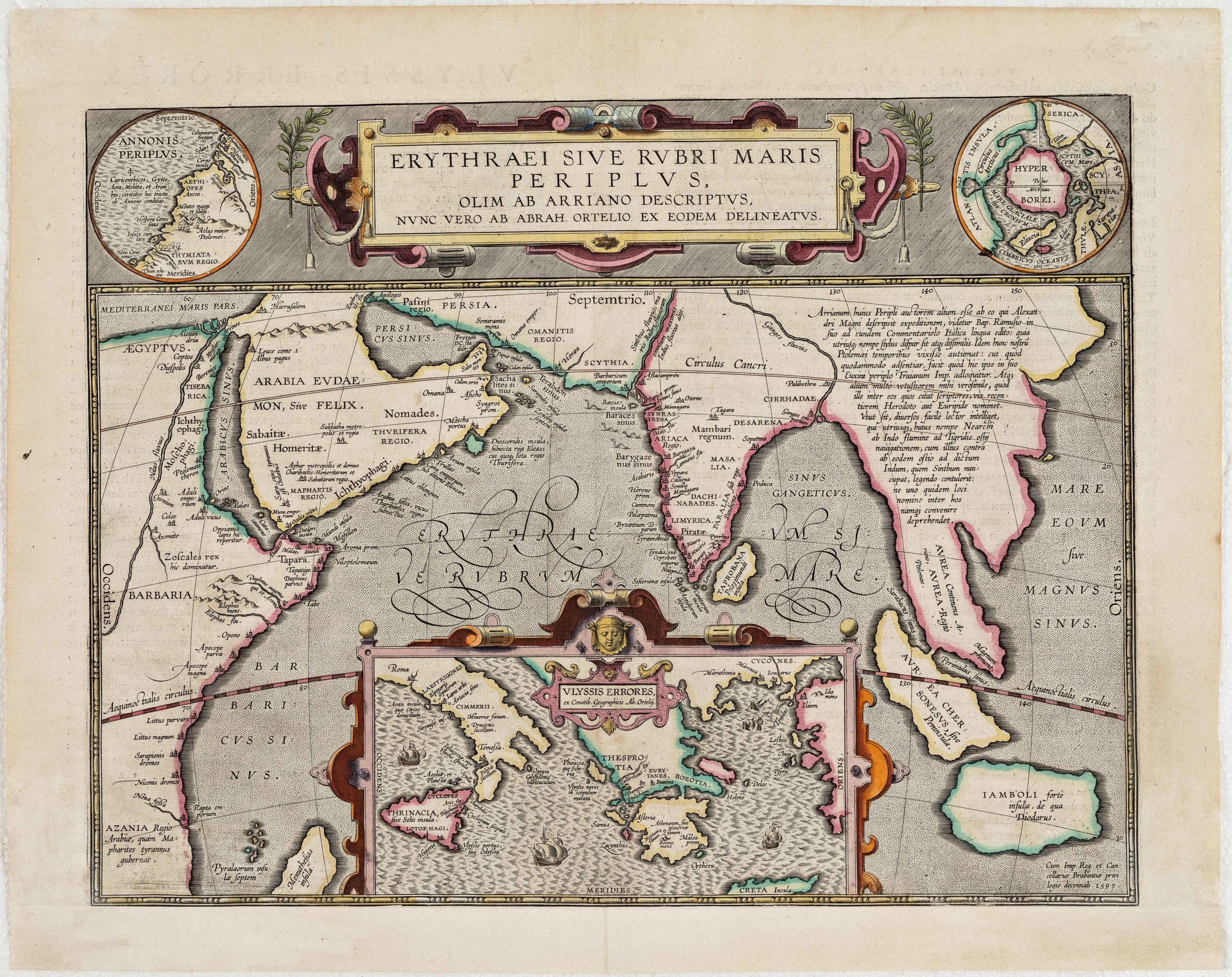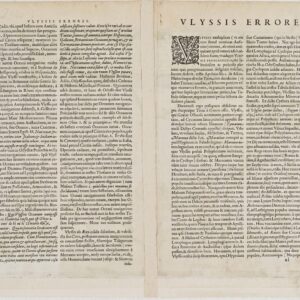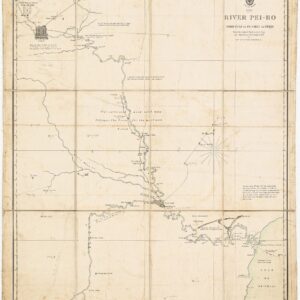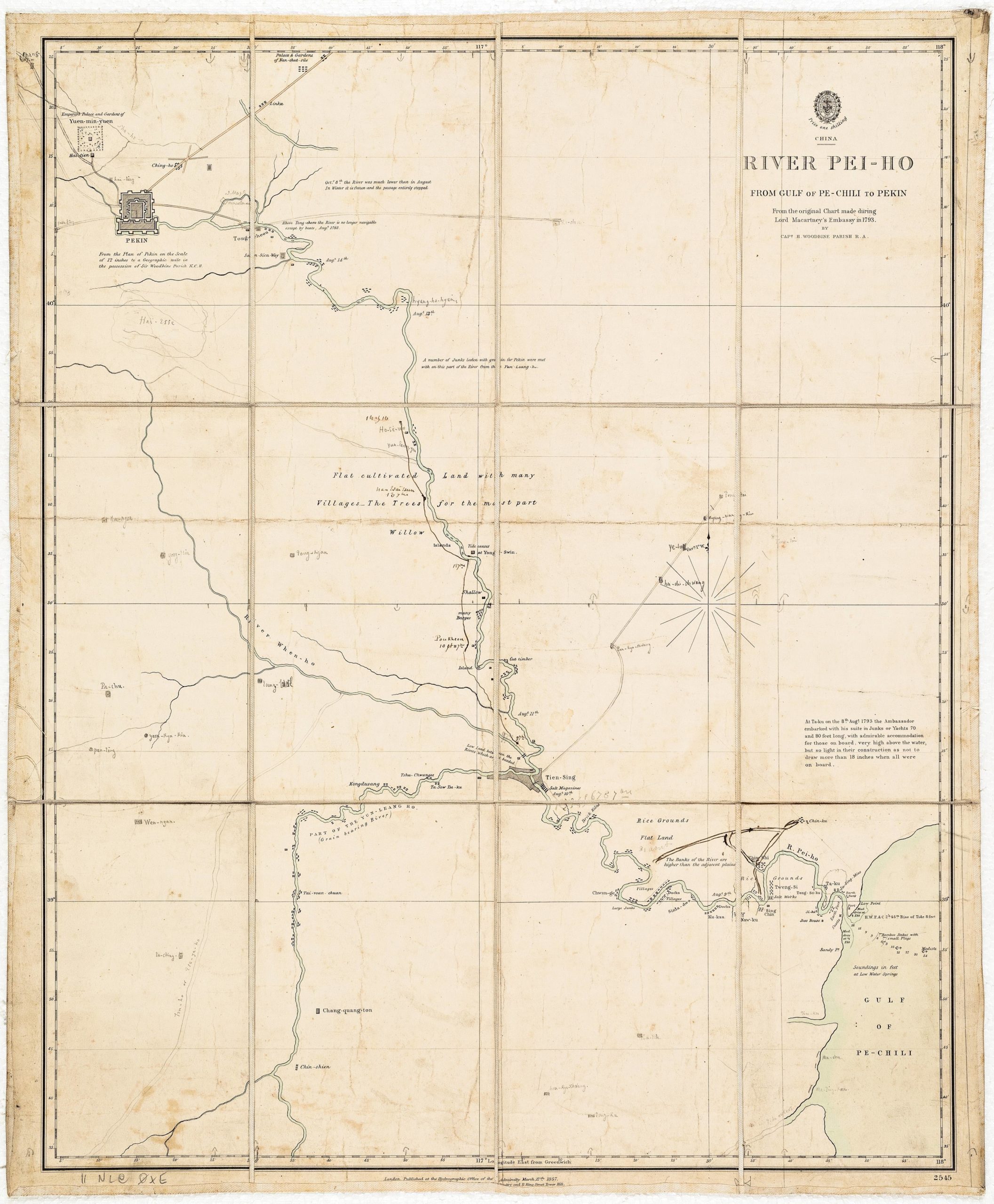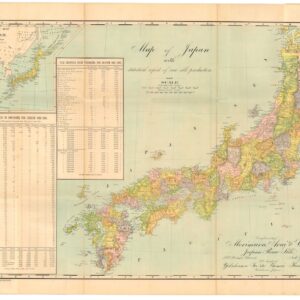An especially rare chart of South India, the Maldives, and Sri Lanka.
To Capt. P. Heywood…this chart… for navigating to from and in the East Indies.
$1,400
1 in stock
Description
This 1811 chart of the Indian Ocean was produced by James Horsburgh, one of the most accomplished hydrographers of the early 19th century, and is addressed to Peter Heywood, himself an expert hydrographer with the Royal Navy.
The chart shows various suggested routes through the notoriously difficult-to-navigate middle portion of the Indian Ocean depending on a ship’s destination and the time of year in which it was traveling. Soundings are provided all along the coasts of India, Ceylon, and the Chagos Archipelago. Coastal mountains are also indicated to aid the navigator.
Handwritten annotations in French are present at bottom-center and towards bottom-left, tracking the progress of a ship through the southern Maldives and near Ceylon. This route was especially difficult, given the hundreds of small islets, reefs, and other features both above and below the surface of the water. Horsburgh notes which channels are relatively safe or dangerous, as well as some of the ships that had wrecked there in the past.
The dedication of this chart to Heywood is noteworthy because of Heywood’s remarkable life. He had been aboard the famed H.M.S Bounty as a midshipman during its mutiny as a very young man and his role in the mutiny is highly uncertain. According to the deposed Captain Bligh, young Heywood was one of the ringleaders of the mutiny, but other crew members’ accounts differ. In any event, Heywood lived as a fugitive for two years in Tahiti, cohabiting with a local woman with whom he had a child and adopting local customs, before being arrested by the Royal Navy and sentenced to death. But, likely to due to his family’s wealth and connections, he was pardoned by King George III and went on to have a respectable career as a naval officer and hydrographer, which brought him into contact with James Horsburgh.
For his part, Horsburgh came from much humbler origins in Scotland, also joining the navy as an adolescent, and eventually made his way to India. After experiencing a shipwreck firsthand, Horsburgh dedicated his efforts to producing better charts of the Indian Ocean and East Indies. In 1809, he published the acclaimed Directions for sailing to and from the East Indies… (also known as the “India Directory”), a work which relied on Heywood’s charts of previously unmapped portions of the coasts of Ceylon and India. In 1810, Horsburgh was appointed Hydrographer of the British East India Company, replacing Alexander Dalrymple.
Census
Horsburgh’s charts are as rare as they are notable. Two other examples of this chart are known, held by the National Library of Singapore and the National Library of Australia; however, those charts are dated to 1809 and 1833, respectively, making this the only known example of this edition of the chart.
Cartographer(s):
James Horsburgh (1762 – 1836) was one of the most accomplished hydrographers of the early 19th century. He was employed by the British East India Company (EIC).
Condition Description
Evidence of use at sea (manuscript annotations). Scattered soiling and wear, as one would expect. A nice example of a very rare chart.
References
